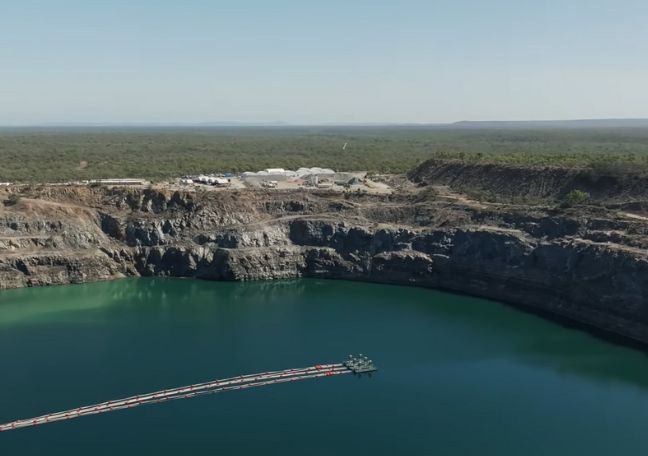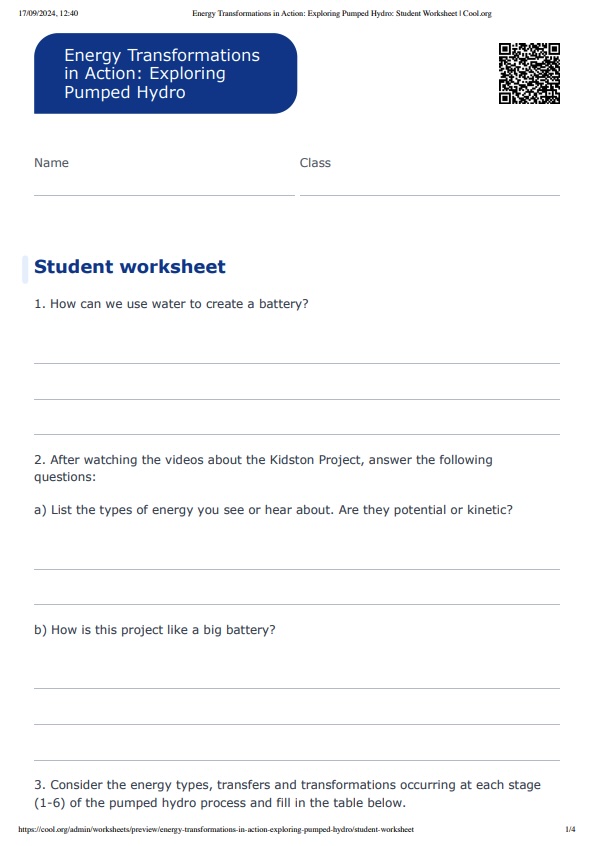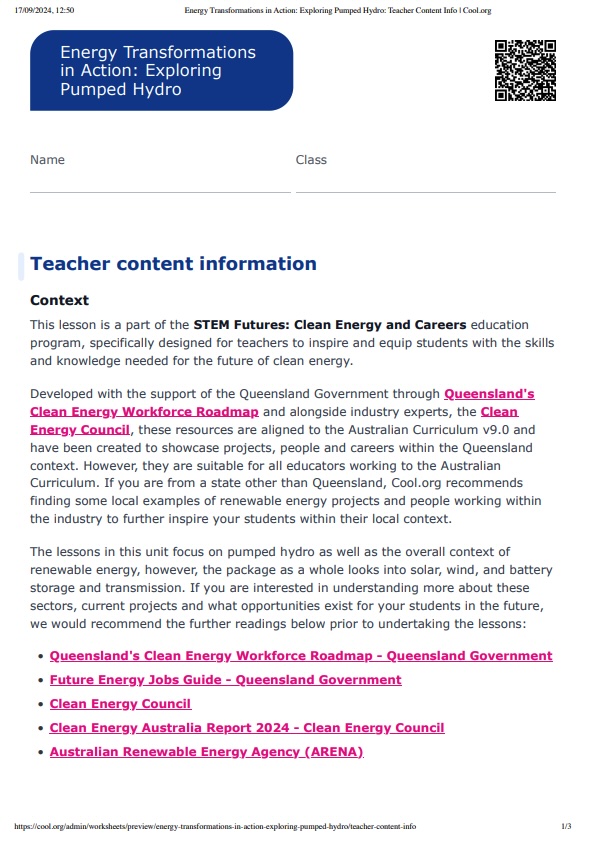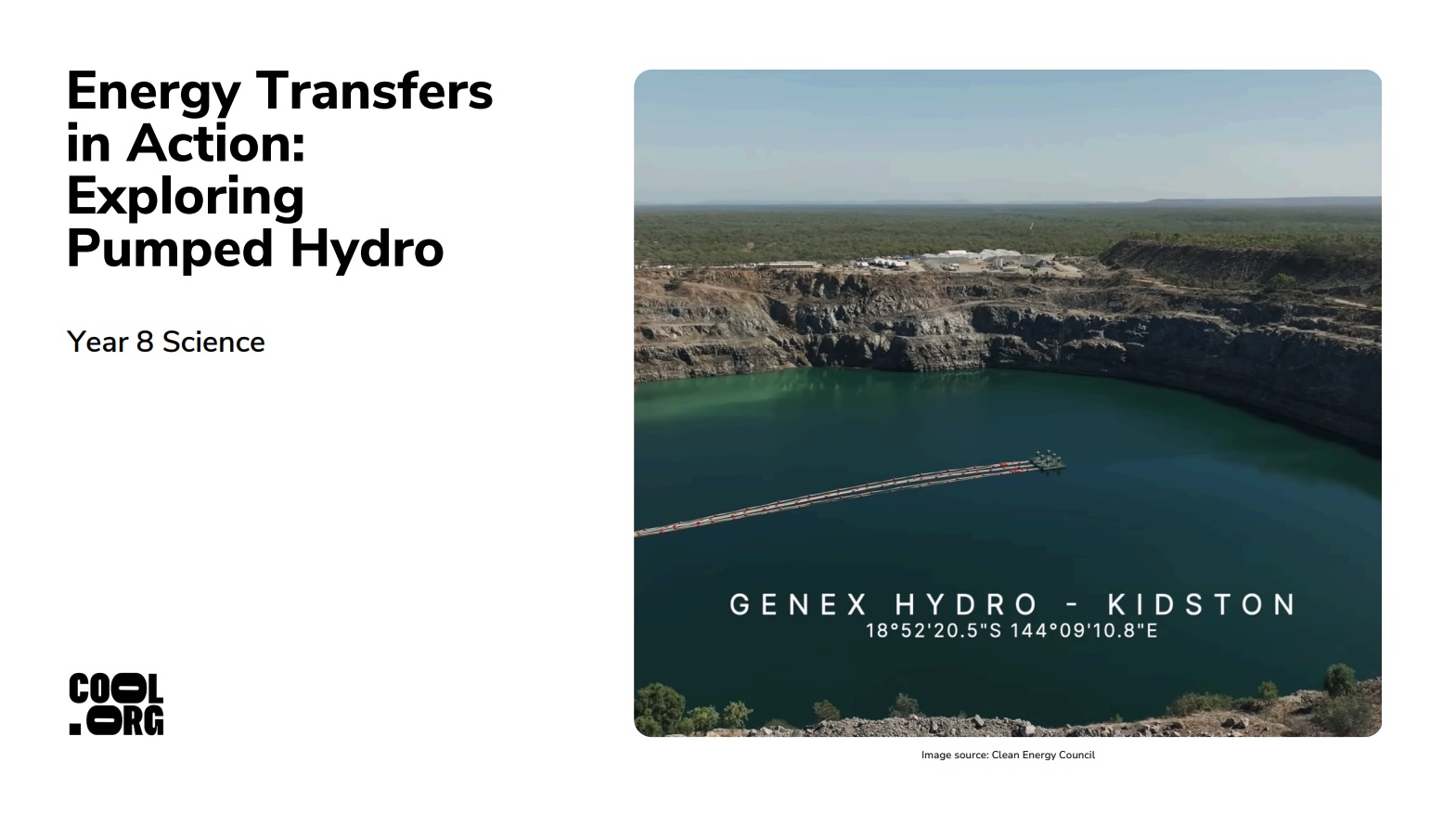Lesson summary
In this lesson, students will classify different types of energy as kinetic or potential and investigate energy transfers and transformations within the Kidston Pumped Hydro renewable energy project. They will explore how this system operates as a large-scale battery that stores and generates electricity and understand the factors influencing its sustainability. Students will also understand the careers involved in this renewable industry.
Learning intentions:
Students will...
- explore the energy transfers and transformations in the Kidston Pumped Hydro Project
- understand the importance of energy storage systems like batteries in supporting renewable energy.
Success criteria:
Students can...
- categorise energy types as potential or kinetic during various stages of the Kidston Pumped Hydro Project
- describe the different types of energy involved in the Kidston Pumped Hydro Project and outline their transformations and transfers
- outline the importance of the type, order and timing of particular energy transfers and transformations occurring in the system, and summarise their importance for enhancing sustainability.
Lesson guides and printables
Curriculum links
Select your curriculum from the options below.
Lesson details
Skills
This lesson is designed to build students’ competencies in the following skills:
- creative thinking
- collaboration
- communication
- digital literacy
- problem-solving
Curriculum Mapping
Australian Curriculum (v9.0) content description: Year 8, Physical Sciences
Students learn to:
- classify different types of energy as kinetic or potential and investigate energy transfer and transformations in simple systems (AC9S8U05).
Relevant parts of Year 8 achievement standards: Students can compare different forms of energy and represent the transfer and transformation of energy in simple systems.
NSW Syllabus outcomes:
- describes the effects of forces in everyday contexts (SC4-FOR-01)
General capabilities: Critical and Creative Thinking
Cross-curriculum priority: Sustainability
Level of teacher scaffolding: Medium: explicit teaching of concepts related to energy transfer and transformation. Facilitate discussion and research.
UN Sustainable Development Goals
UN SDG 7: Ensure access to affordable, reliable, sustainable and modern energy for all
- Target 7.1: By 2030, ensure universal access to affordable, reliable and modern energy services.
- Target 7.2: By 2030, increase substantially the share of renewable energy in the global energy mix.
- Target 7.3: By 2030, double the global rate of improvement in energy efficiency.
Resources Required
- A3 Kidston Project poster
- Batteries for observation
- Device capable of displaying audiovisual material
- Jug/beaker of water
- Student Worksheet
Additional Info
This lesson has been developed in partnership with the Queensland Government through Queensland's Clean Energy Workforce Roadmap. Cool.org would like to acknowledge and express our gratitude to the Clean Energy Council for the expertise and advice provided in creating these resources.
Related Professional Learning
STEM Professional Learning Pathway
Quick summary: Enhance your practice with Cool.org's STEM Professional Learning Pathway. This year-long plan is designed to build your skills and capabilities in teaching STEM, ultimately transforming you into a STEM Innovator. The pathway will prepare you to integrate STEM education effectively, adapt to technological advancements and inspire students to succeed in a rapidly evolving world.





Welcome back!
Don't have an account yet?
Log in with:
Create your free Cool.org account.
Many of our resources are free, with an option to upgrade to Cool+ for premium content.
Already have an account?
Sign up with:
By signing up you accept Cool.org's Terms and Conditions(Opens in new tab) and Privacy Policy(Opens in new tab).